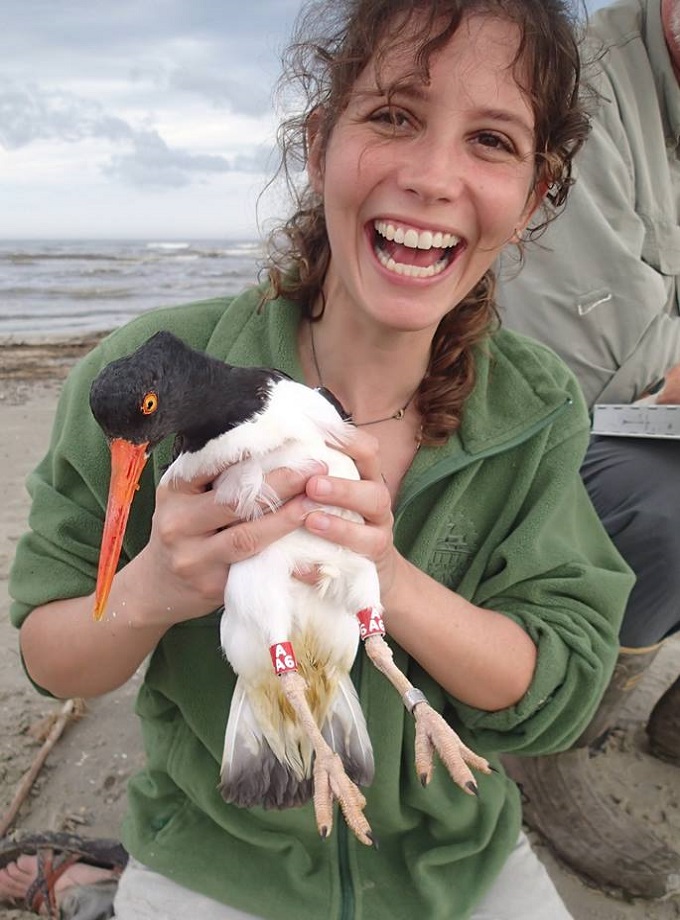As we stood on the short stretch of re-nourished shoreline, we were completely absorbed watching hundreds of shorebirds feeding in a frenzy as the tide fell, exposing soft, wet sand that harbored bountiful, nutritious horseshoe crab eggs. The shorebirds were all dressed for their Arctic breeding grounds, their vibrant colors reflecting the setting sun in the warm evening night. Colorful and feisty Ruddy Turnstones, rusty and speckled Short-billed Dowitchers, Sanderling showing off their warm reddish-brown color, and Dunlin with solid black bellies.
It was nearing the end of May so these birds were restless while feeding, and some were a bit ahead of themselves, singing their Arctic breeding songs. It’s rare in Georgia to hear Arctic nesting shorebirds singing, but at the end of spring migration, just before they take off, you can catch little snippets. Others were territorial as they fed at a particularly dense patch of horseshoe crab eggs, bickering like kids after a very long road trip. For some of these shorebirds who may have traveled from as far as southern South America, it’s easy to imagine they might be tired of their travel companions.
A volunteer and I have been surveying this little stretch of sand since July 2019, as part of a larger project to better understand how people and birds use publically accessible beaches. Fort Pulaski has only had a beach for a short time—dredged material from the Savannah shipping channel was placed here to protect cultural resources dating back to the Civil War from a retreating, erosional shoreline. The added sediment did more than protect the Fort—it created a new opportunity for shorebirds to escape the crowds of people from Savannah who visit the beaches of Tybee Island, and find a safe resting place just a short flight up-river. But, as word spreads about this tiny shoreline, people have started to view it as a dog-friendly option for walking and recreation, and it is common to have a dozen people and dogs near the access point. Throughout most of the surveys I’ve conducted, the birds have used only the quieter half of beach—we’ve counted large flocks of American Oystercatchers, Whimbrel, Black-bellied Plovers, and Semipalmated Plovers packed in to the far end of about 200 meters.






 Back to all
Back to all


